Citrus trees, including Orange, Lime, Kumquat, and Grapefruit, can be grown in a wide range of soils until the soil is drained well, which is why gardens are often located on slopes or grown on mounds. You should do soil testing for drainage before planting Citrus trees. A foot-deep hole is filled with water to test the soil and is allowed to be removed and then refilled with water. If it is not drained by the next day, a Citrus tree should be planted elsewhere, on a raised bed or gently on a sloping mound.
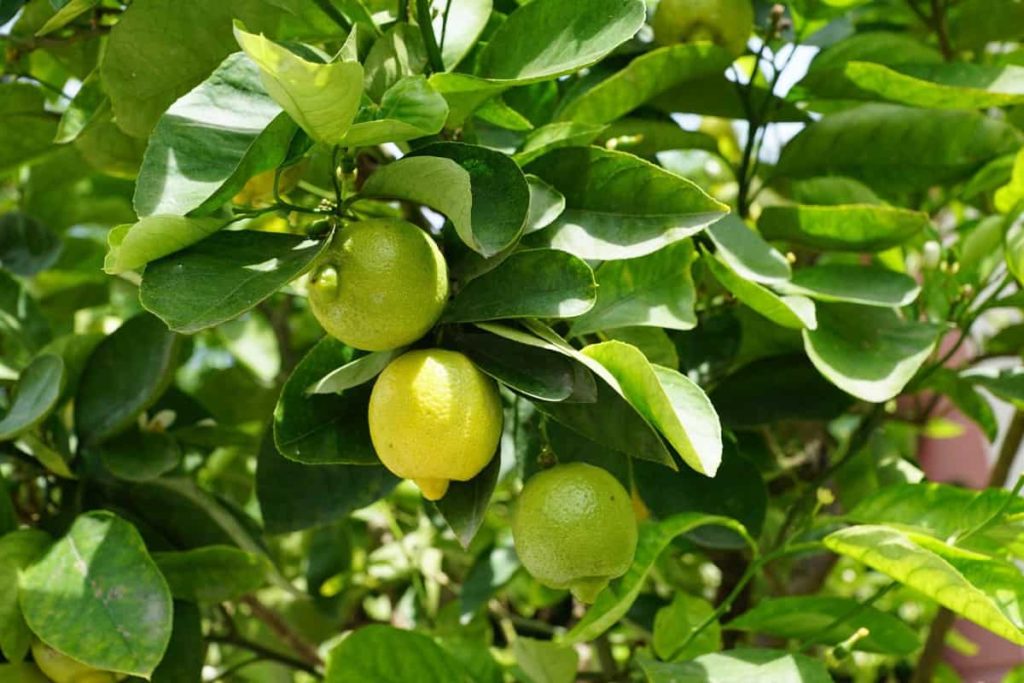
Raised bed or mound above the surrounding land helps properly drain the soil, especially when amended soil drains better than native soil. Citrus grows best in well-drained and airy, sandy loam soil. The site should be root-free from other trees, as Citrus roots compete poorly with other tree roots. Good drainage and air are very important to prevent root rot in Citrus. Low-lying places that maintain rainwater should be avoided. Let’s check out how to prepare the soil for Citrus trees.
How to prepare the soil for Citrus trees
Soil pH for Citrus
The best type of soil for Citrus trees is rich, well-draining, loamy soil with a pH of 5.5 to 6.5. The soil should also be loose but clump up slightly upwards when wet. Loamy soil with mixed sand is even better as sand provides better drainage and a little acidic pH. Clay soil is often dry, and hard clumps form even when wet. Being sandy, loamy soil, the Citrus tree will retain enough space and water to grow strong roots.
The slight acidity of the soil will help the tree become faster and healthier. Healthy Citrus trees can prevent more pests and diseases than weak trees. Citrus trees, including lime, Meyer lemon, Kumquat, and oranges, will all thrive in clay soil with a pH of 6. At this pH will have many nutrients available for plant use.
Preparation of soil for growing Citrus in pots
Light potting mix, which drains well with inorganic ingredients like perlite, vermiculite, coconut coir, or peat moss, is excellent for growing Citrus in pots. Choose soil that is all organic matter will decompose quickly and compact, reducing aeration for roots. Avoid soils that contain wet chemical agents; they maintain a lot of moisture. The native soil is also very compact and will not give the roots the air they need.
Place a stone or a piece of screening wire on the drainage holes and fill the pot halfway through. Place the plant in the center of the pot so that the top of its soil is about an inch below the edge of the pot. Add soil around the roots until you fill the pot one inch below the rim. Water well until the water drains out of the drainage holes.
In case you missed it: Best Fertilizer for Citrus Tree: Homemade, Organic, Natural, Liquid, Compost, How and When to Apply
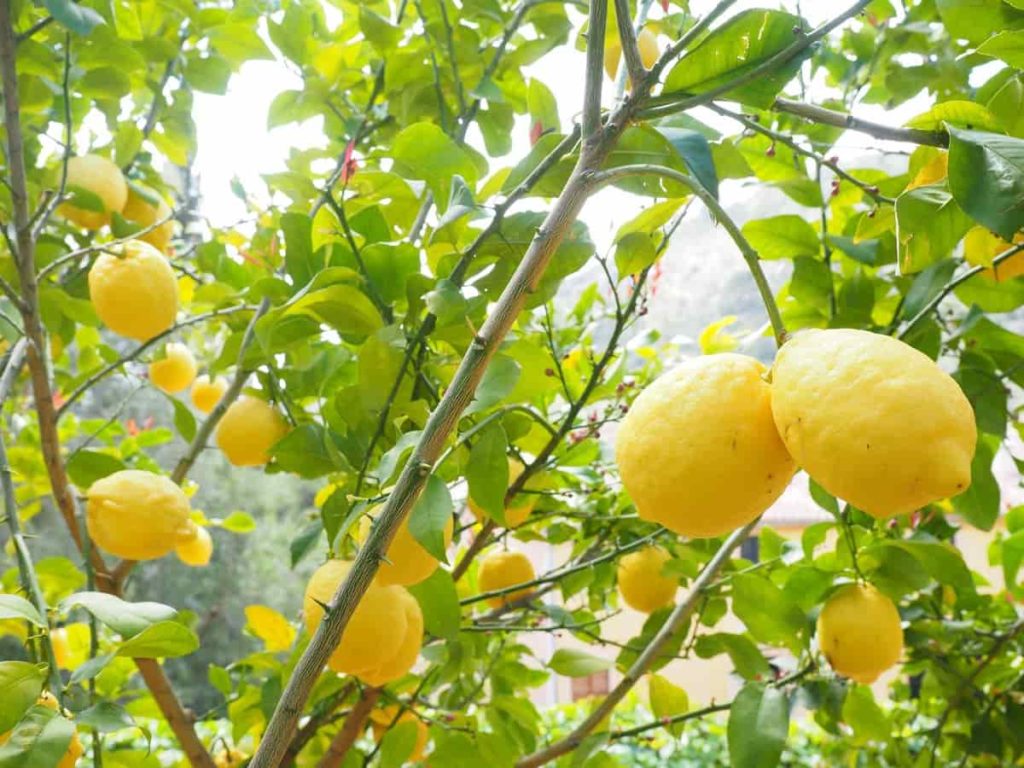
Preparation of soil for growing Citrus on grounds
Citrus trees do the best in a location with fertile, well-drained soil. If your soil has a higher percentage of clay, add sand to increase drainage. Add the peat to maintain nutrients and moisture if your soil is very sandy. Citrus trees don’t like wet feet so avoid places that remain moist or soggy. Proper drainage is essential for healthy Citrus trees. It is also important that the soil level is weeded or grass-free. A very light mulch can control the weeds, but avoid thick, heavy mulch or compost under your Citrus tree (especially at or around the tree trunk).
Citrus trees will not tolerate poorly drained soil, which can cause a devastating root rot disease. Improve heavy soil by adding a large quantity of manure and a few buckets of gypsum to the planting area at least 2 meters wide. To improve drainage, mound the soil at a depth of about 30 to 40 centimeters at the center. Adding organic matter to fast-draining sandy soil before planting Citrus trees helps keep soil water and nutrients.
How to grow Citrus in poor soil
Citrus trees can grow successfully in clay soil but grow better in sandy or loamy soil. While clay soil will not kill already established Citrus trees, it can make it difficult for young Citrus trees to grow. Clay soil is not an excellent growing source for Citrus trees due to the high soil density and pH. Most clay soils are compact, holding water and preventing roots and worms from burrowing.
The soil is also alkaline, with a pH too much for Citrus trees. It can prevent nutrients from being absorbed by the tree. You can modify clay soil by mixing it with sand or compost. Both sand and compost help balance the soil by providing a more balanced pH and by adding large particles to break the soil.
Furthermore, you can use covered crops to penetrate the ground and start building nutrients in it. If the soil is hard and clay-like, add gypsum. Add a mixture of compost or garden mix, well-rotten manure, or organic matter to enrich the soil. Add any of them through the soil or at least continuously dig up to the spade’s depth and combine.
In case you missed it: Lemon Seed Germination, Growing from Seed (Citrus)

Soil composting for Citrus
Citrus trees like Lemon, Lime, Orange, and Mandarin will benefit from composting. These trees are heavy feeder roots that grow in the top 12 inches of soil. Adding a nutritious top dressing of compost will quickly reach the roots of the feeder and boost nutrients for the tree in the growing season. Top dressing Citrus trees on top with compost every year are an easy way to prepare them to promote nutrition and grow them lots of fruits.
Topping the compost with the mulch will help the soil moisture and keep the weeds away from your Citrus trees. Top dressing can also be done with aged cow manure, worm casting, and pelleted chicken manure. Mix all these ingredients, including a handful of pelleted chicken manure. It is the perfect nutritious mix for your Citrus trees. The combination contains a mixture of nitrogen and organic matter for leaf growth that will maintain soil moisture and feed the soil bacteria.
Soil bacteria will encourage worms that mix organic matter through the soil. The worms will create air pockets in the soil and help the Citrus tree grow a strong and large root system. A mixed tree mulch is the best mulch to add to Citrus top dressing. It is a mixture of bark mulch pieces and stem pieces that will create a perfect combination of green and brown material. You can also use a straw, sugarcane mulch, and Lucerne which will break quickly and mix in the soil.
Land preparation for Citrus
Land preparation is the key to your tree’s success. Your goal is to create a large area of loose soil that young roots can easily penetrate, get food and quickly establish when they go. You need at least three times more area than the pot diameter as your spade will go. Next, add some organic material to the soil while digging. Organic material is good, and the best includes well-rotten cows, sheep, or horse manure; garden compost, or if you have nothing else, peat moss.
Remove the roots of the weeds from this area and any stone larger than your fist. Small stones can be left, and it is not a good idea to sieve through the soil to remove small stones that are best left and can help drainage. Turn the soil over, mix organic material, level it, and get ready to plant. Save some organic materials that you used to mix your tree after planting.
Once your hole is dug, and the surrounding ground loosens, you can add organic material to your pile of topsoil. Mix in composted cow manure, garden compost, or peat moss to increase soil volume by one-third. Cut leaves or grass clippings from your yard are also viable soil modifications. Both will add organic nutrients and loosen the soil. Avoid adding fertilizer at the time of planting.
In case you missed it: 24 Common Lemon Tree Problems: How to Fix Them, Solutions, and Treatment
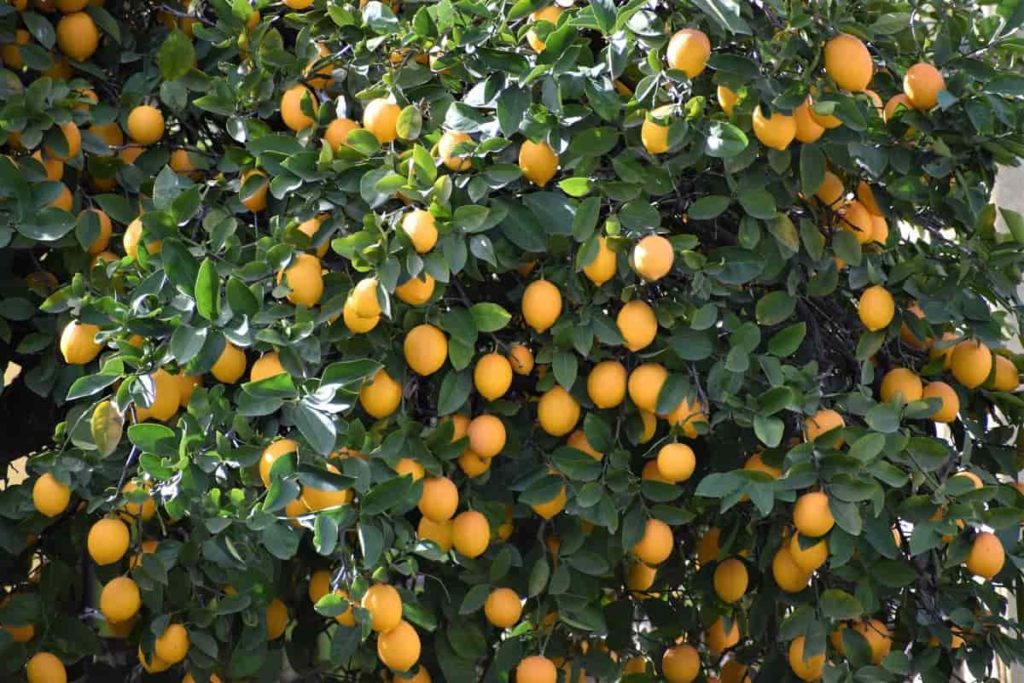
Best soil mix for Citrus
Use a good quality, lightweight mixture prepared for containers. Look for inorganic ingredients, such as perlite and vermiculite, which will provide long-term drainage and air. Large particles such as pine or other wooden chips, peat moss, coir, coconut husk chips, and coarse sand also help promote drainage and air around the root system.
Mixes that contain all organic matter or are equally fine particles, on the other hand, will rot and compact quickly, reducing air, which is terrible for roots. Avoid mixes that contain wet chemical agents, which can encourage soil conditions to remain overly moist. The best potting soil for Citrus trees is an organic sandy, loam soil that is well-drained and contains a high amount of nutrients. A good combination of ingredients to make potting mix is 1/4 of each sand, stomach, perlite, and compost.
Soil recipe for Citrus
A good soil recipe for Citrus trees includes two parts peat moss, two parts perlite, and 1-part aged manure. If the peat moss is acidic, it will provide lower pH to Citrus trees. It will also help maintain nutrition and water without contaminating soil. Perlite is an impermeable substance that helps in drainage and air. Mixing in the perlite, you prevent compaction and water-logging. Compost promotes nutrients as well as soil life. It also helps in maintaining nutrition and water. Be careful while adding compost; the material is completely decomposed.
Natural soil amendments for Citrus
Citrus trees can benefit from light mulch to maintain soil moisture and discourage weed or grass growth. Do not allow grass to grow to the base of the tree. Instead, use chopped wood mulch such as cypress or a wood blend. Layer the mulch to about three inches to cover the ground around the newly planted tree. However, be sure to have a six-inch cover of clean soil around the base of the tree’s stem.
In case you missed it: How to Grow a Lemon Tree at Home in the USA: From Seeds, Cuttings, Faster, In Backyard, Indoors, and Pots
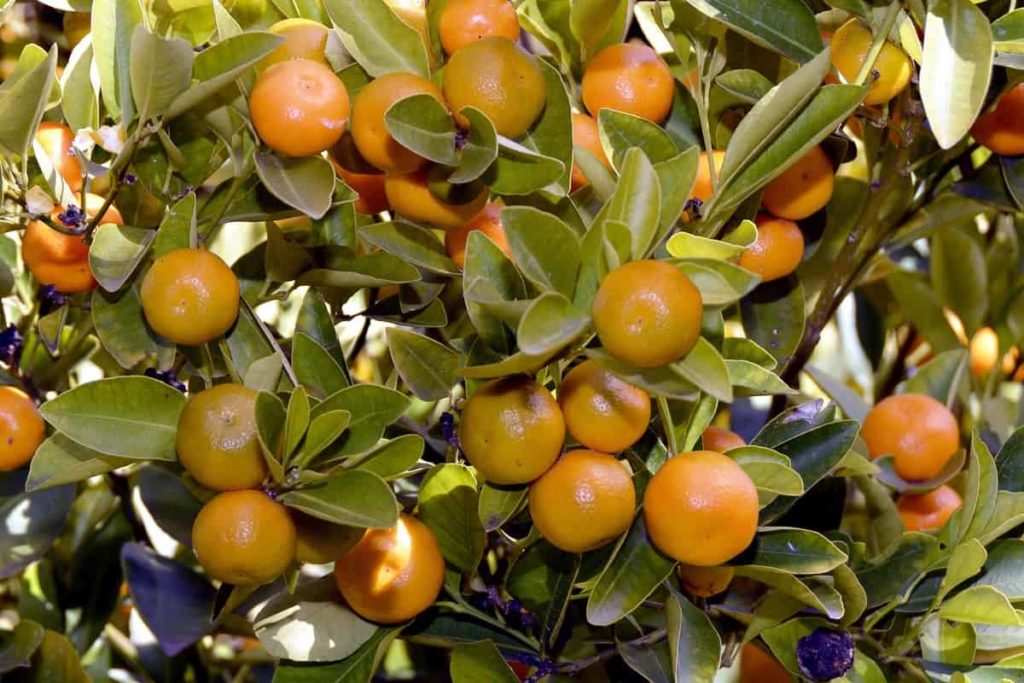
The area should always be free of mulch or debris on the tree’s base. Sprinkle 2 to 3 handfuls of pelleted chicken manure around the tree root area in spring. Dissolve chicken manure in water and water around the base of the Citrus trees. Add fresh chicken manure to your compost bin for at least six months, then add over the soil. Mix the aged chicken manure with the worm castings and place it around the tree’s base.
Mix the pelleted chicken manure, compost, and worm castings and place them around the root zone of Citrus trees. Cover with mulch, and as soon as it rains or you water the tree, the nutrients will be washed to feeder roots near the soil level. Citrus trees take advantage of the mix of compost and garden soil. Composted soil allows the growing roots of the young tree to spread easily as the soil is loose and suitable.
The addition of compost will create a healthy growing environment for the young tree. Compost also absorbs water easily into the soil. As a result, you can see that your tree is more resistant to pest and disease problems. Compost produces the slow release of nutrients, so the tree continuously benefits over time. A regular composting schedule benefits mature Citrus trees by helping them resist disease and pest attacks. Healthy soil makes trees that resist the onslaught of aphids, white fly, and leaf diseases.
What to do with soil when growing Citrus
Wildflowers are the best companion plants for Citrus trees because they attract beneficial insects, such as pollinators. These pollinators include bees, butterflies, and hummingbirds. Lavender is known to prevent fleas because of its strong oil and can even remove mice and rats. In addition, these plants are like hot, dry conditions, making them good choices for gardens that experience extreme summer heat.
In case you missed it: Lemon Gardening For Beginners, How To Start, FAQs
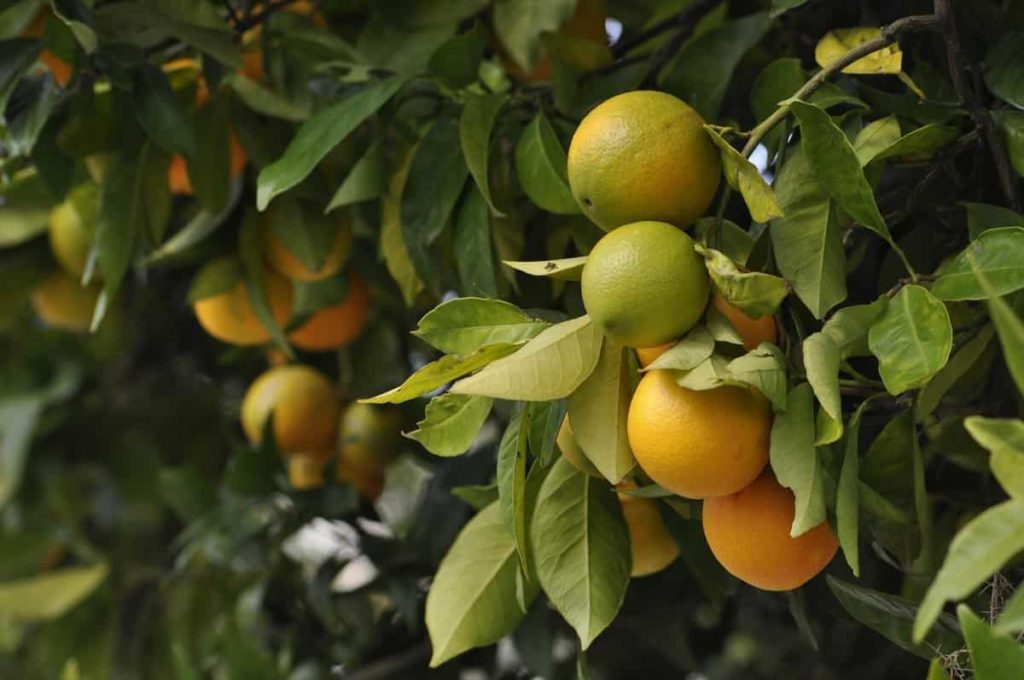
Rosemary usually blooms early, which is a huge benefit for pollinating Citrus flowers. Rosemary and Lavender have relatively short roots, which are good because deep roots can withstand the shallow roots of a Citrus tree. Consider planting Rosemary around Citrus trees to increase your soil draining. The Comfrey is one of the most popular companion flowers because you can use it to attract pollinators. For best results, plant Comfrey with fruit trees like Citrus and vegetables like Asparagus.
However, the Comfrey grows only well about any plant. Nasturtium is edible, beautiful, and fast-growing. They are great companions for Citrus trees as they attract pollinators and attract aphids away from the tree. You can interplant Nasturtium with any plant in this color for extra color by your Citrus tree. Chives, Garlic, and Onions have natural antifungal properties. For example, when the Chives are planted with Apple trees, they help prevent fungal diseases called scabs.
Since Citrus trees suffer from fungal infections, like apples, planting chives nearby should also help prevent fungal infections. The Chives bloom in spring and summer with beautiful purple flowers, which attract pollinators. When planting near Citrus trees, avoid plants with deep roots because they can compete and even damage the roots of the shallow Citrus tree. These plants include tubers, root vegetables like Potatoes, Sweet Potatoes, Carrots, and other fruit trees.
While most fruit trees have 90 percent roots in the first 2 feet of soil, they have some deep roots that can withstand Citrus trees. While planting Citrus and a companion plant in the same pot is not a good idea, you can use a pot for each plant and keep them close. There is no minimum distance to maintain here. However, avoid touching both plants as mold or disease can spread from soil or leaves.
- Broccoli Seed Germination and Selection
- Asparagus Seed Germination and Variety Selection
- Seasonal Flower Gardening: Best Practices for Spring, Summer, Fall, and Winter
- How to Grow Hibiscus from Flower
- Plantation Ideas for Home Decoration: A Beginners Guide
- Flower Garden Designs and Layouts for Beginners
- Planting and Spacing Techniques in Papaya: A Beginner’s Guide
- Growing Gold: Essential Techniques for Planting Pineapples
- How to Make Kalanchoe Plant Bushy: Home Remedies and Solutions
- 11 Reasons Why Your Gardenia is Not Blooming: Home Remedies and Solutions
- Eco Elegance: The Guide to Designing a Drought-Tolerant Landscape
- Gardening on a Slope: Strategies for Hillside Landscaping
- Nourish and Flourish: Top Organic Mulches for Thriving House Plants
- Everything You Want to Know about Indian Mogra Flower: Discover Uses and Growing
- Green Thumb Success: Expert Tips for Cultivating Greenhouse Pumpkins All Year Round
- Maximize Growth & Flavor: The Ultimate Guide to Companion Planting in Herb Gardens
- How to Control Rhododendron Problems Naturally: Home Remedies and Organic Ways to Fix Them
- Natural Magic: The Remarkable Benefits of Cinnamon for Plants
- Best Steps to Revive Dying Tulip with Natural and Organic Treatment
- 10 Reasons Why Your Angel Trumpet is Not Blooming: Remedies and Treatment
- How to Fix Periwinkle Leaf and Flower-Related Problems: Natural Remedies and Solutions
- How to Fix Zinnias Leaf and Flower Problems: Discover Natural and Home Remedies
- Organic Steps to Induce Lemon Tree Flowers: A Comprehensive Guide
- Bloom Booster: Crafting the Perfect Homemade Bougainvillea Fertilizer
- Optimizing Growth: A Guide to Applying NPK Fertilizer for Potted Plants
- 10 Best Homemade Fertilizers for Rubber Plant: DIY Recipes and Application Method
- How to Boost Female Pumpkin Flowers: Effective Steps for More Flowers and High Yields
- Transform Your Indoor Garden: Top Benefits of Pink Salt for Houseplants
- 10 Best Homemade Fertilizers for Peacock Plants (Calathea): Easy DIY Guide
- Unlock Blooms: 9 Reasons Why Your Potted Chrysanthemum is Not Blooming
- 8 Reasons Why Your Potted Hibiscus is Not Blooming: Fix it with Simple Solutions
- Unlock Blooms: 9 Key Reasons Your Potted Frangipani Won’t Flower
- 10 Reasons Why Is My Ice Plant Not Blooming: Remedies and Treatment
- 10 Reasons Why My Potted Hydrangea Not Blooming: Treatment and Remedies
- 10 Reasons Why is My Wisteria Not Blooming: Remedies and Treatment
- 10 Reasons Why is My Goldfish Plant Not Blooming: Remedies and Treatment